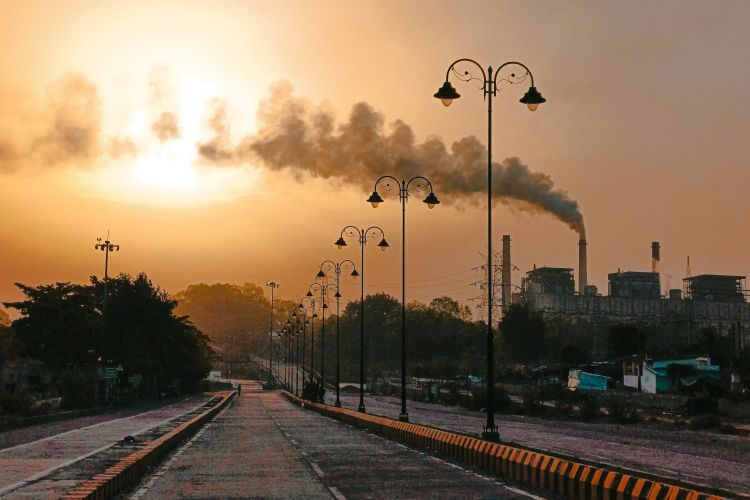Net Zero plan: India is vigorously striving not only to cut greenhouse gas emissions but also to improve the quality of life for its people. Its diverse topography and ecosystems render it especially susceptible to calamities triggered by climate change. The blistering heatwaves of May and June 2024, among the hottest on record, underscore the urgency of the situation. Ranked as the 7th most climate-affected nation by the Global Climate Risk Index 2021, India’s imperative is clear – it must fortify its climate resilience.
From 2010 to 2015, China outpaced other countries in announcing climate policies, yet India emerged as the leader in subsequent years. India’s robust climate policy framework includes landmark initiatives such as the Energy Conservation Act of 2001, amended in 2022 to mandate non-fossil energy sources and establish energy efficiency standards for buildings and vehicles. The National Action Plan on Climate Change (NAPCC), launched in 2008, drives ecological sustainability through missions like the National Solar Mission and the National Mission for Sustainable Agriculture. By 2023, the National Solar Mission had achieved over 50 GW of solar power capacity, a significant stride toward the 100 GW target, though still 32 GW short.
READ | Rise of Nvidia: How chipmakers are shaping the future of geopolitics
India’s net zero plans
India’s updated Nationally Determined Contribution under the Paris Agreement pledges net zero emissions by 2070. Ambitious goals include a 45% reduction in GDP emissions intensity from 2005 levels by 2030, sourcing 50% of electric power from non-fossil fuels, and creating a carbon sink of 2.5 to 3 billion tonne of CO2 equivalent through afforestation. Additional non-quantified aims focus on promoting sustainable lifestyles and bolstering climate adaptation investments.
However, policy implementation gaps persist. The Energy Conservation (Amendment) Bill, overseen by the Ministry of Power, raises concerns about regulatory efficacy, traditionally managed by the Ministry of Environment, Forest, and Climate Change (MoEFCC) in other countries. Solar rooftop installations, at 6.7 GW, fall significantly short of the 40 GW target for 2022. The Green India Mission has also underperformed, achieving only 70% of its afforestation targets from 2015-2021, with states like West Bengal and Himachal Pradesh lagging in participation.
To meet its NDC goals, India needs an estimated USD 2.5 trillion by 2030. Yet, climate finance remains insufficient, with only 25% of the annual target achieved in FY 2019-20. International investments are also lacking, making up just 13% and 17% of the required total in 2019 and 2020, respectively, due to high hedging costs and the absence of a standardised green finance taxonomy. Institutional bottlenecks further hamper effective policy execution, necessitating improved coordination and capacity building across ministries and departments.
Some states, like Chhattisgarh, have set commendable examples with cross-sectoral initiatives such as Narva (river conservation), Ghurva (composting), Garva (livestock management), and Bari (backyard farming), which have significantly enhanced local climate resilience in over 1,000 villages. Moving forward, India must prioritise ending coal support, protecting carbon-rich ecosystems, and expanding solar projects, including floating solar and offshore wind initiatives. The Indo-German Energy Forum exemplifies successful international cooperation, resulting in renewable energy projects with a combined capacity of over 1.5 GW.
As the third-largest emitter of greenhouse gases in 2020, India faces a pivotal moment. With emissions projected to peak between 2040-2045, a strategic approach is essential for transitioning from coal to green energy, managing forests sustainably, and securing financial and political backing for effective climate policies. Regional, national, and global cooperation is crucial to achieving India’s climate resilience and sustainable development goals, ensuring a thriving future for the planet. With targeted investments and strategic policy adjustments, India can lead the way towards a sustainable and resilient future.
India’s commitment to climate action has advanced with the Green Credit Program, incentivising sustainable practices to support its Paris Agreement goals. This program rewards companies and individuals for environmentally friendly activities, such as afforestation, renewable energy projects, and sustainable agriculture, allowing them to earn tradable credits to offset their emissions.
Challenges like illegal mining still threaten environmental integrity and the rule of law, demanding stronger policies. Early on, India engaged the private sector in its solar ambitions, attracting $130 billion in investments since 2004, transforming the country into a manufacturing hub for solar panels and creating green jobs. State-level renewable energy purchase obligations and incentives have provided a blueprint for other emerging markets.
India’s rapid expansion in the e-bus market, supported by subsidies for electric and hybrid vehicles, has led to the procurement of nearly 3,500 buses across nine major cities, with additional tenders for 2,100 more in Mumbai alone. The goal of solar power contributing 30% to power generation by 2040 marks a notable achievement. Through innovative climate policies like e-bus market growth and the Lifestyle for Environment (LiFE) initiative promoting sustainable living, India is making significant strides toward a sustainable future.
Souryabrata Mohapatra is an associate fellow at NCAER in the National Growth and Macroeconomic Centre.

